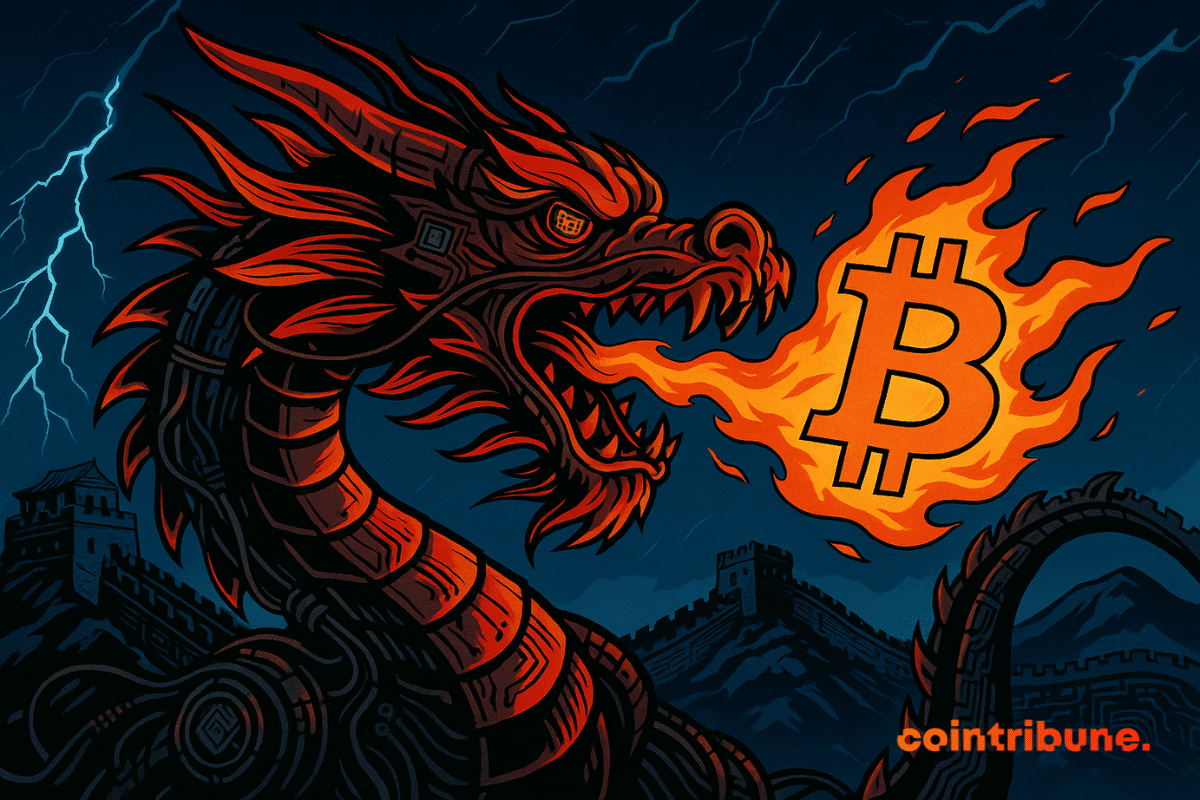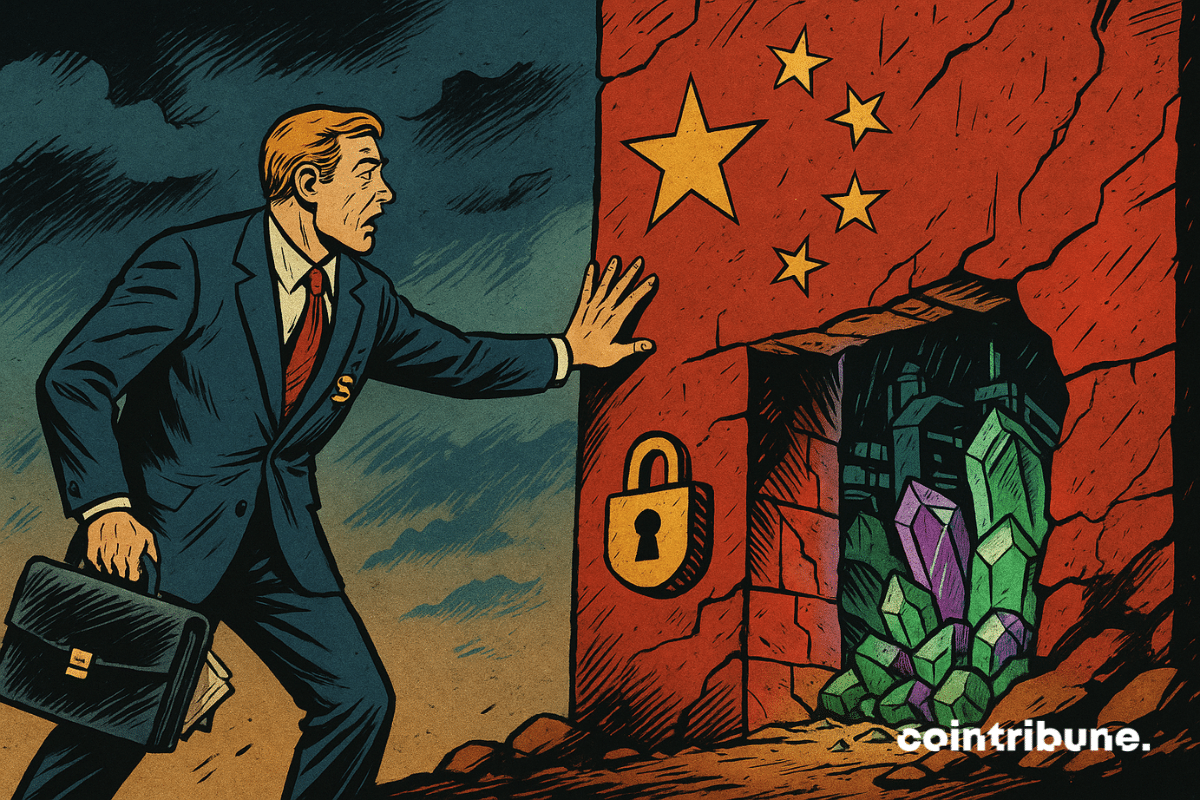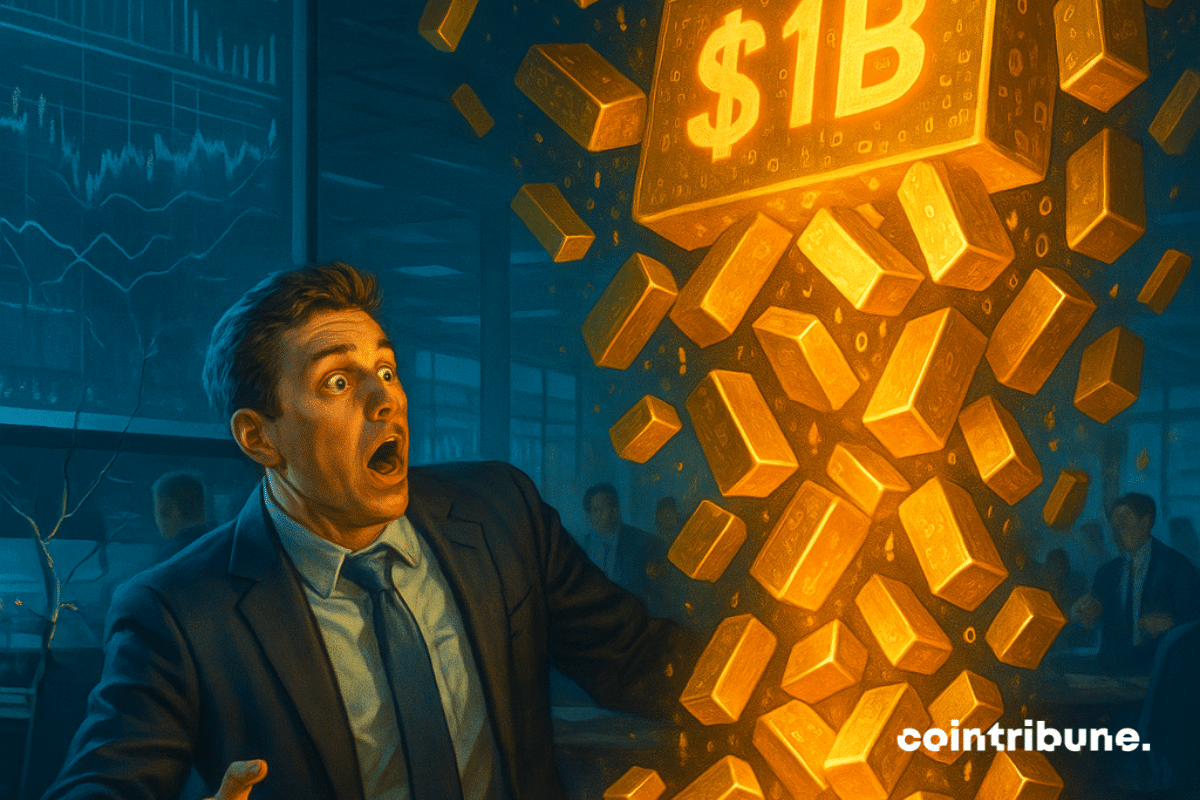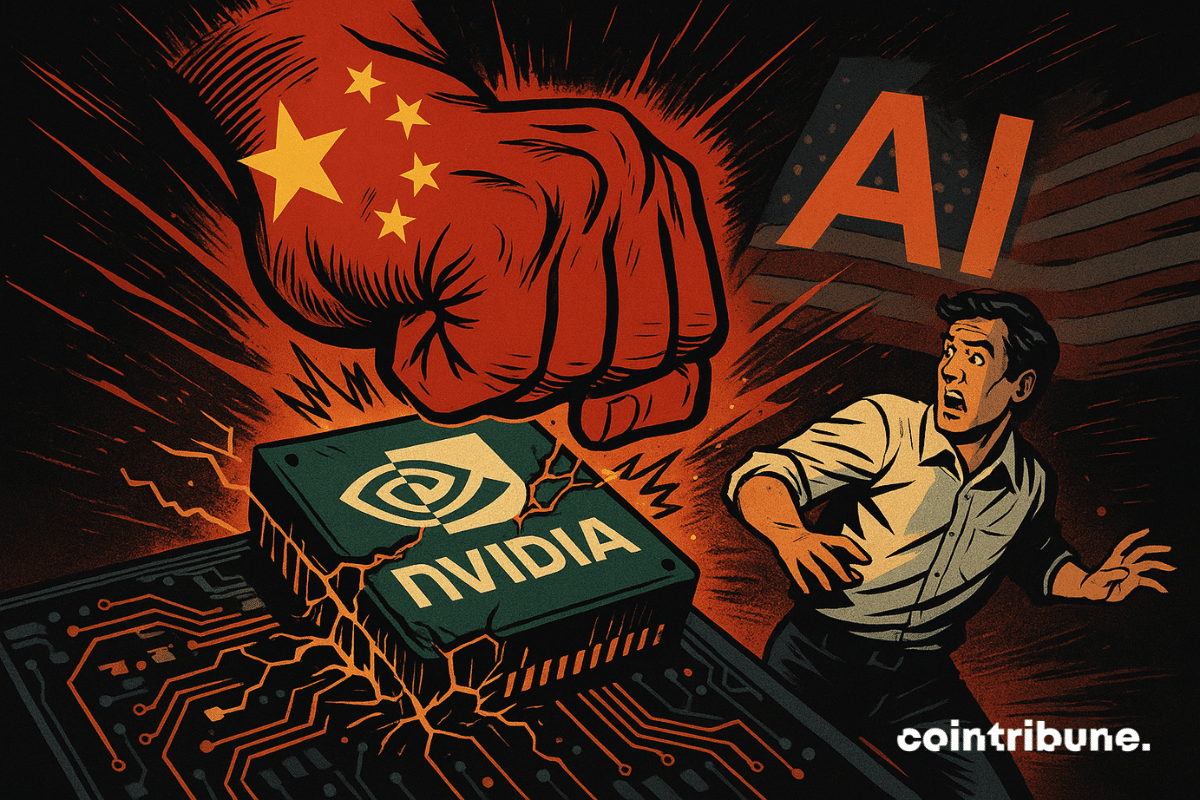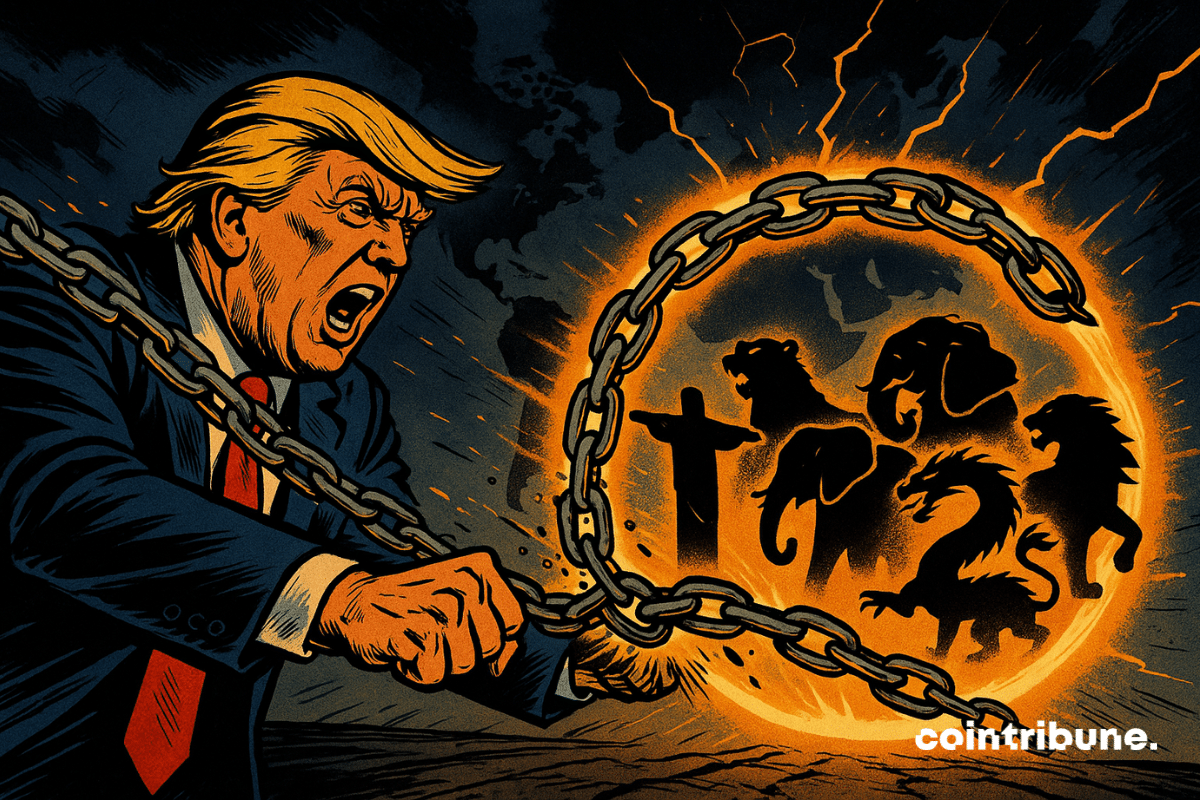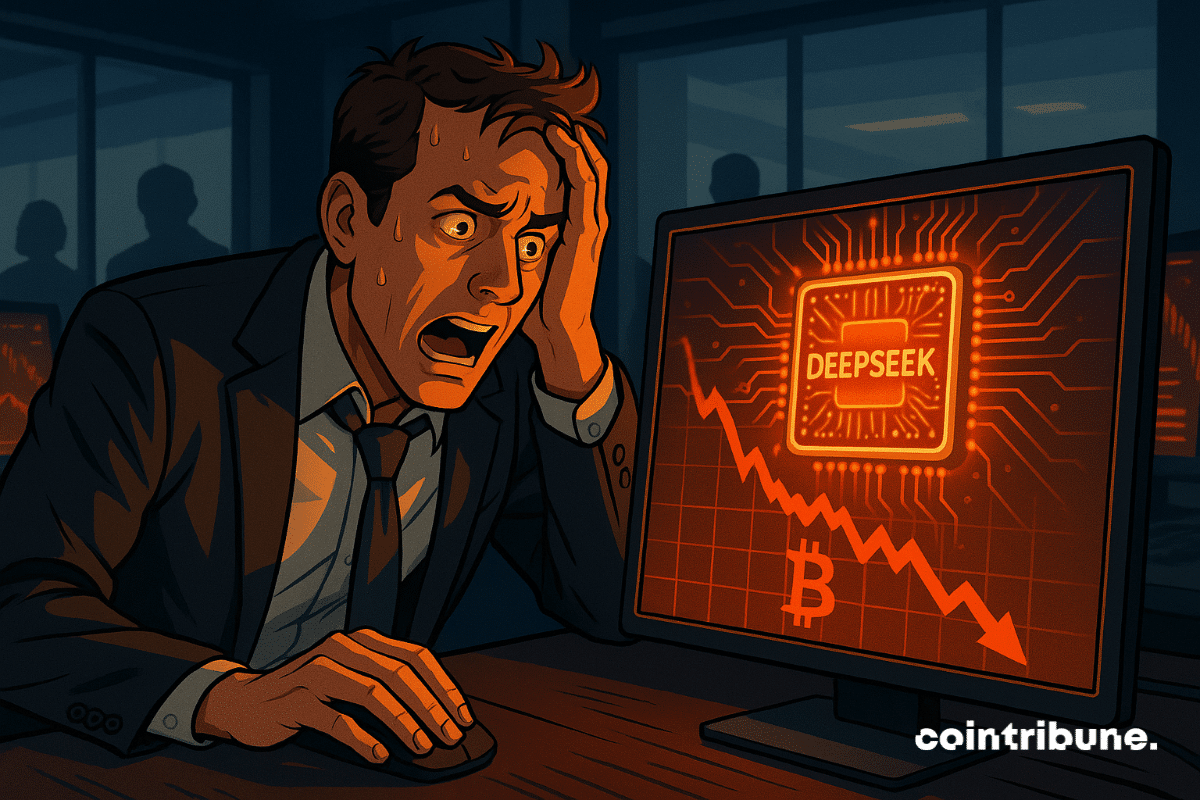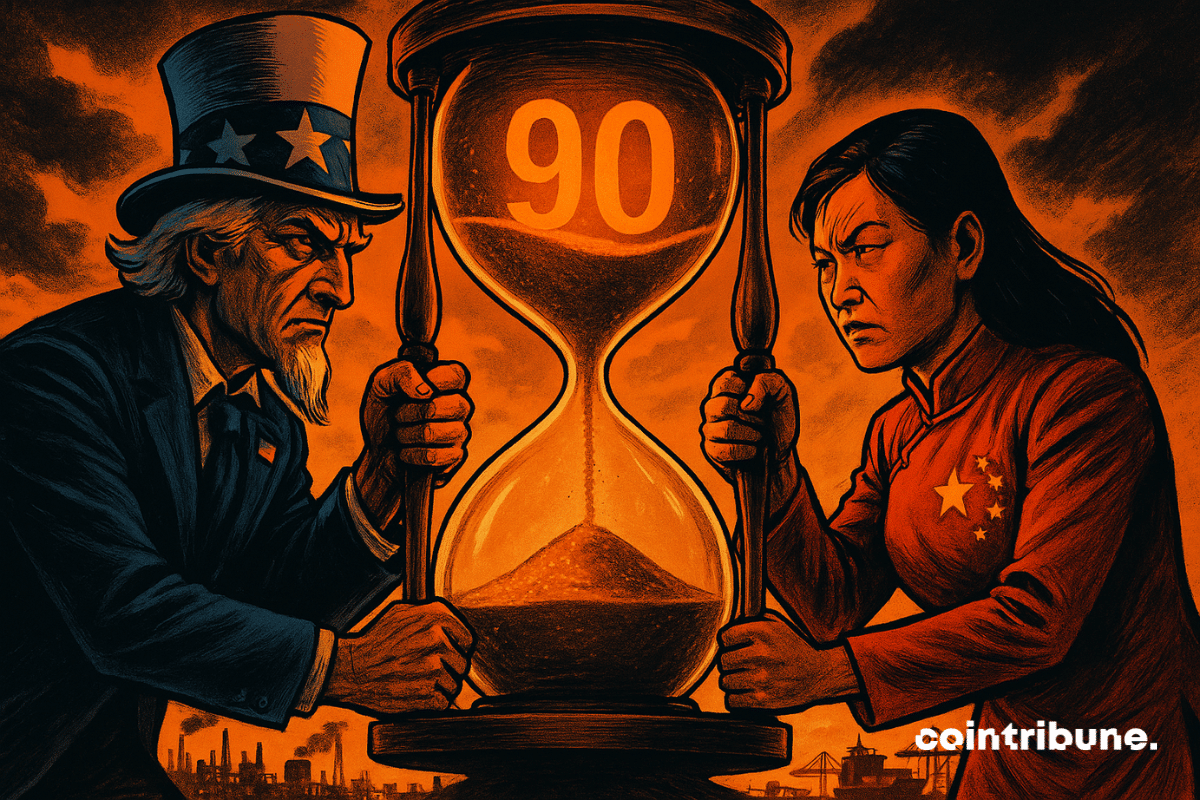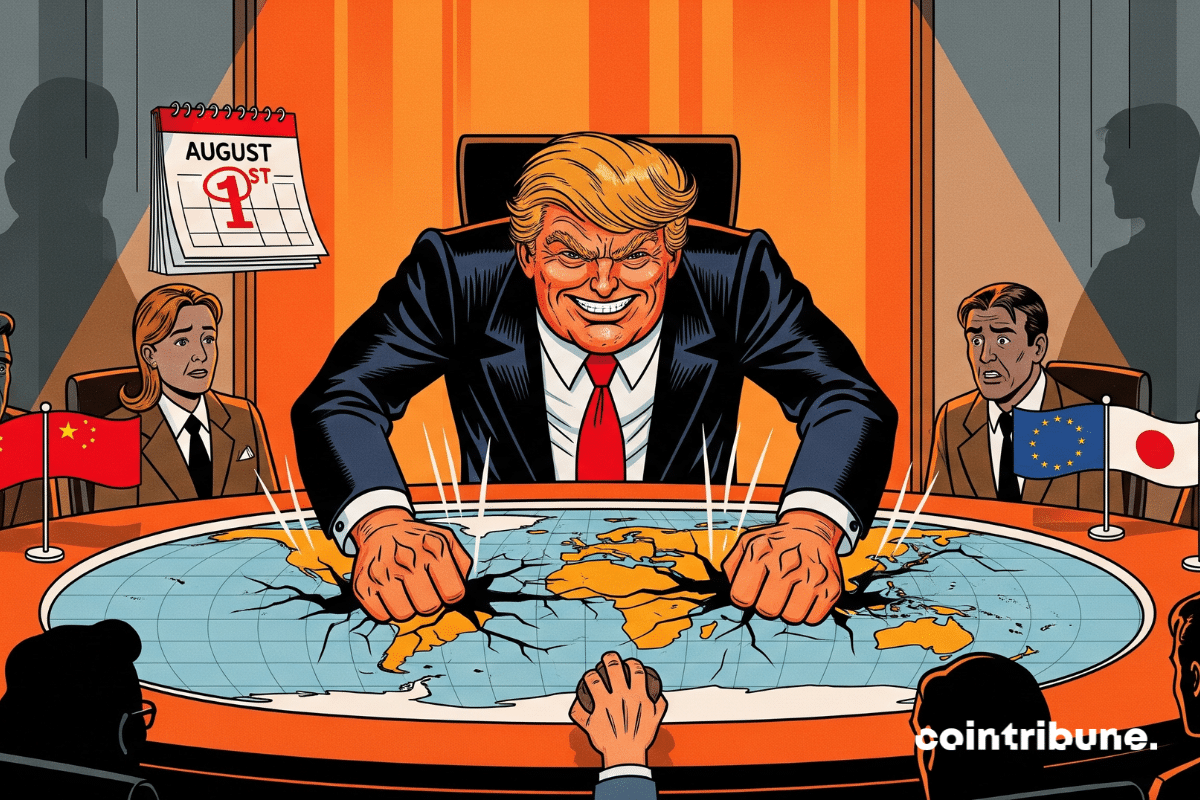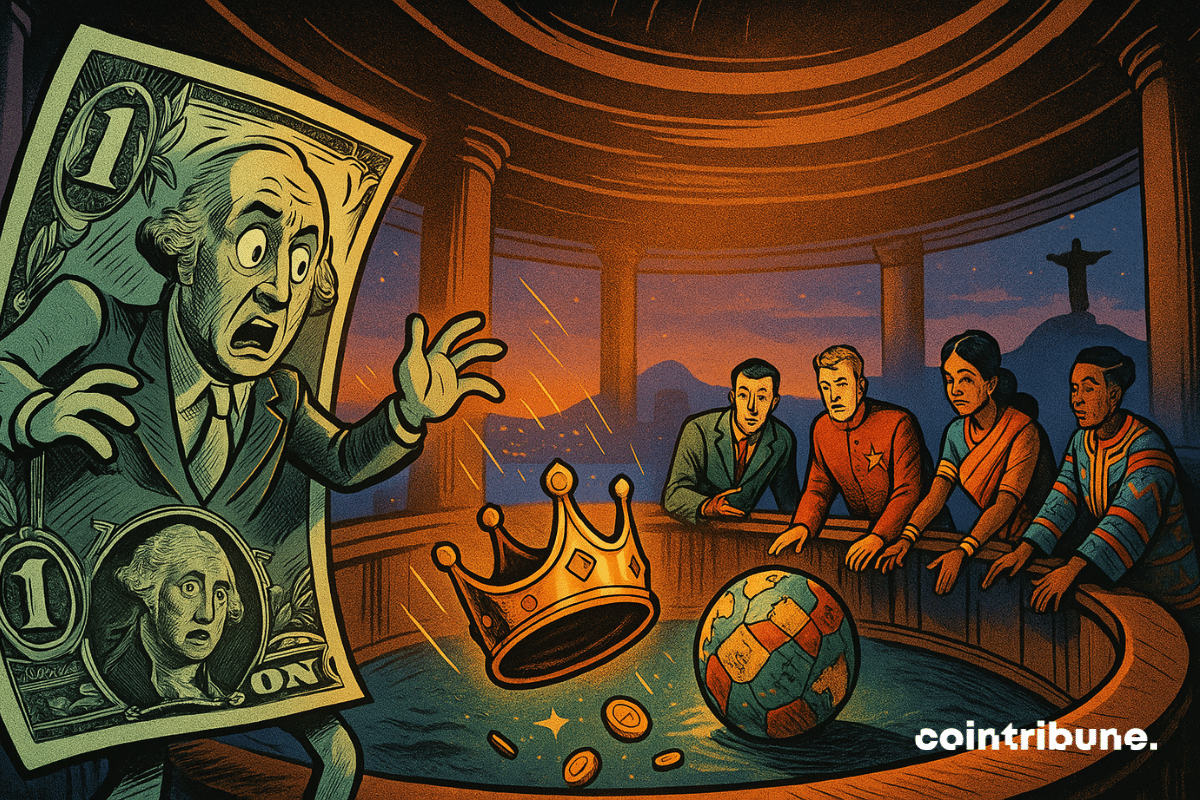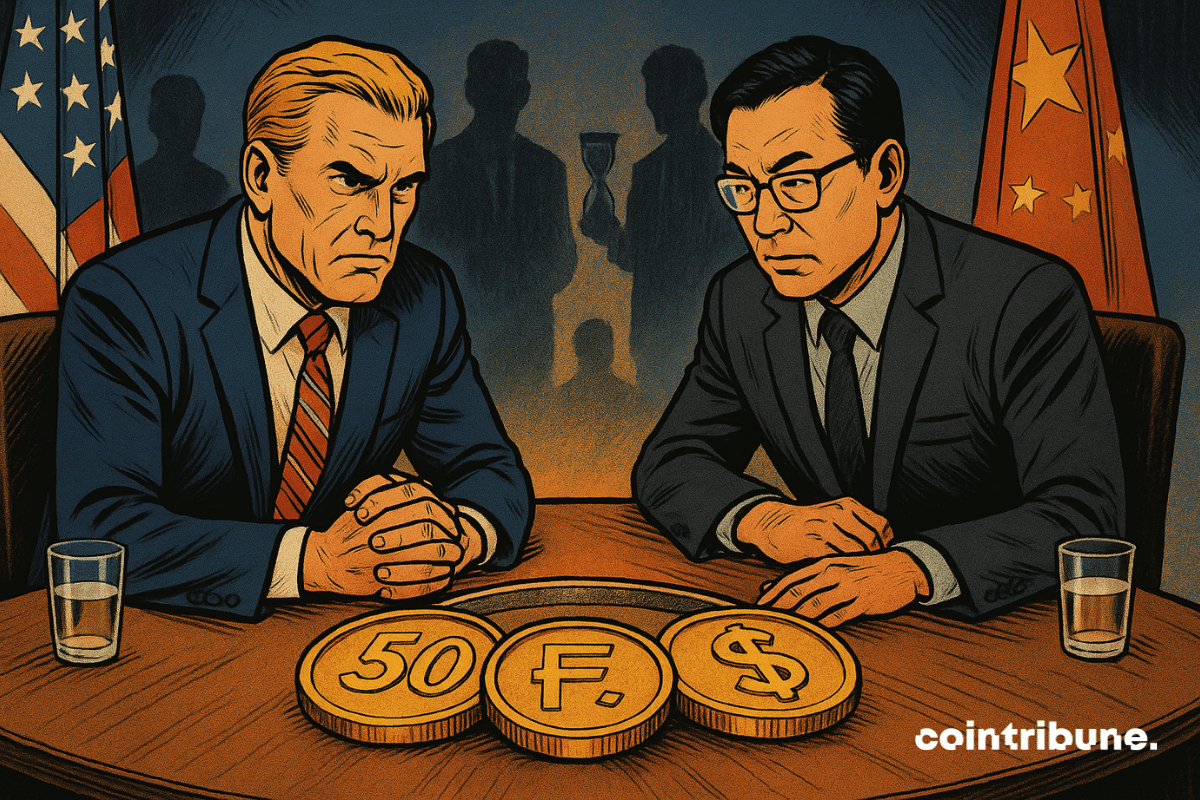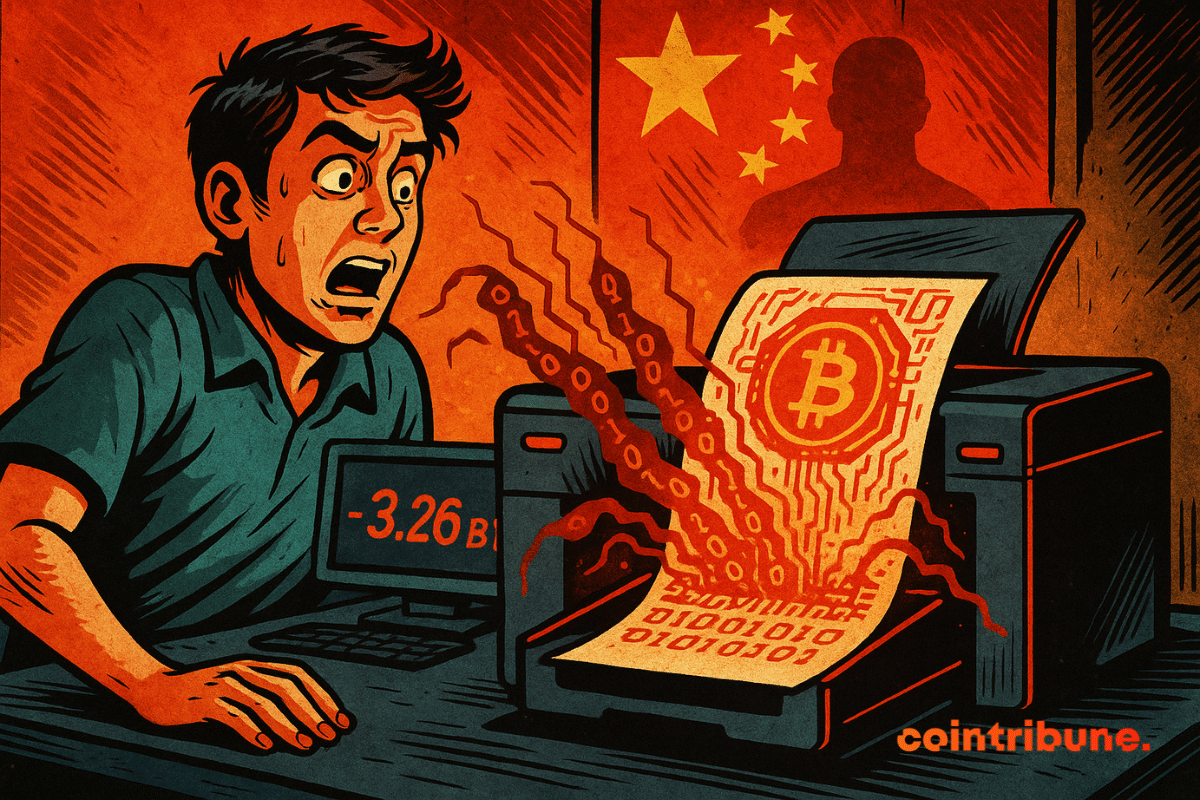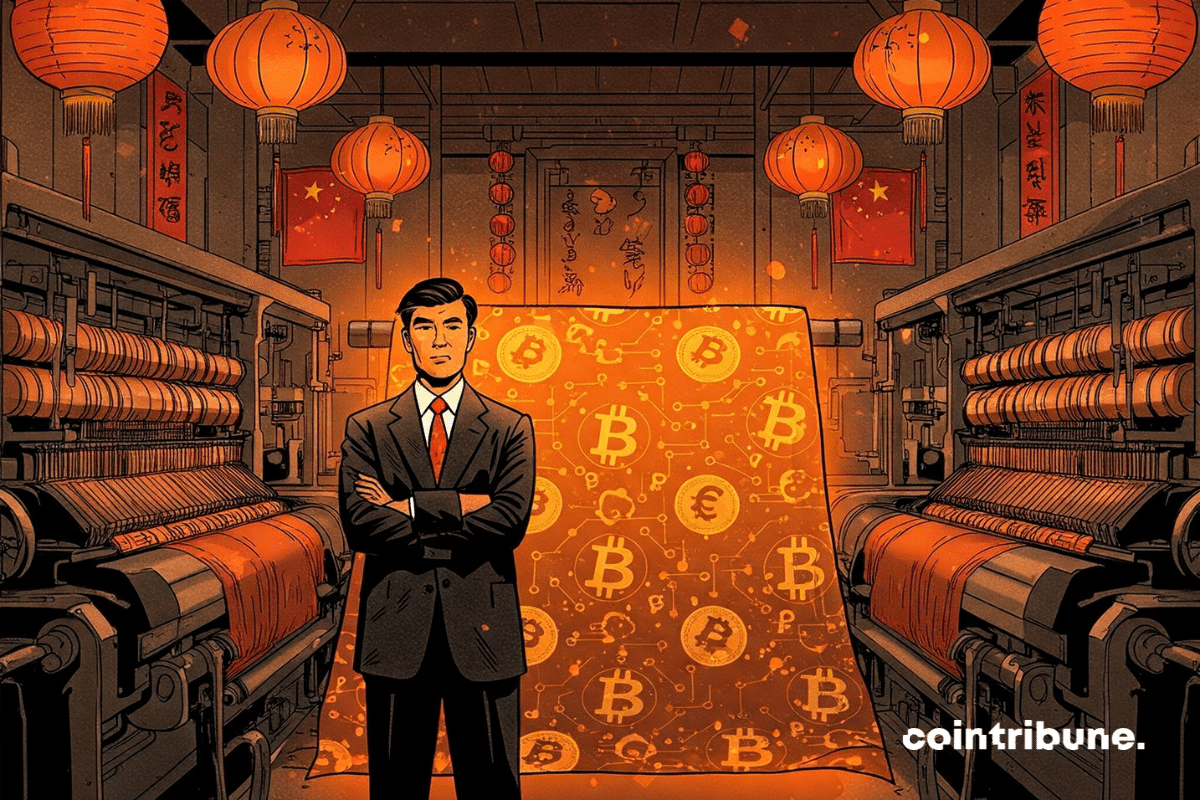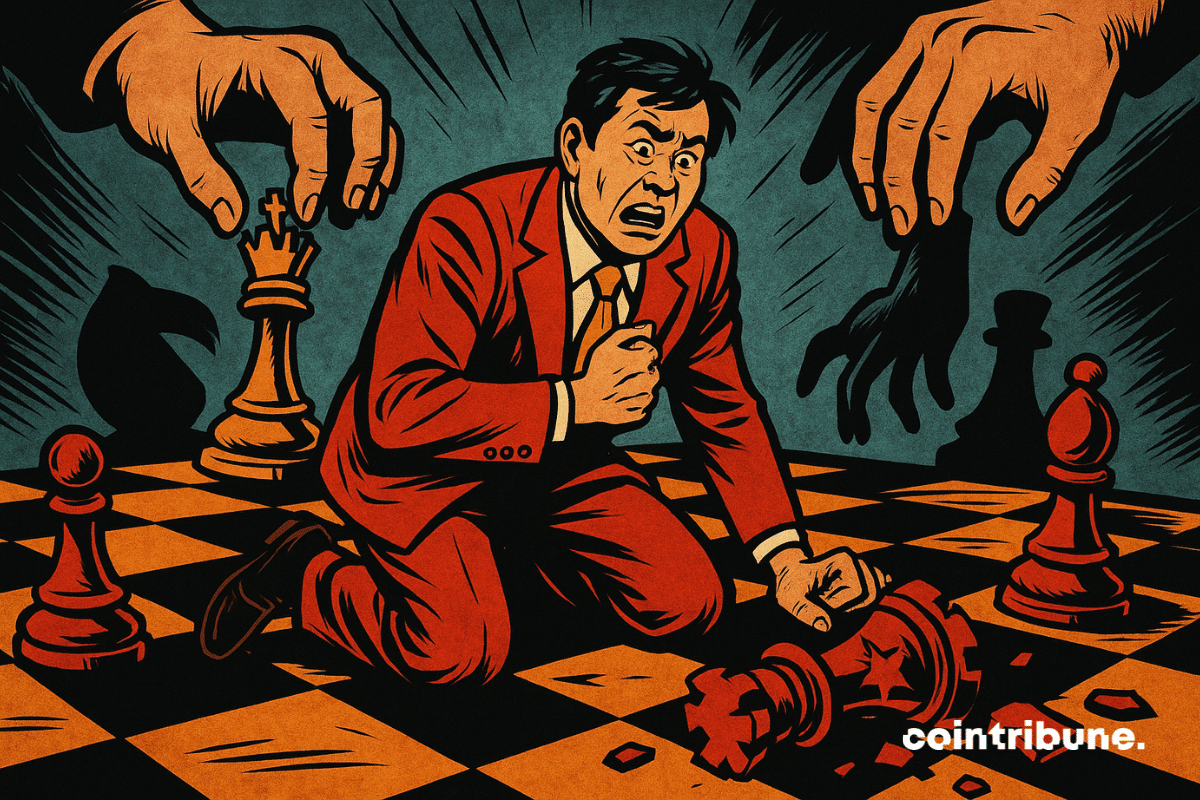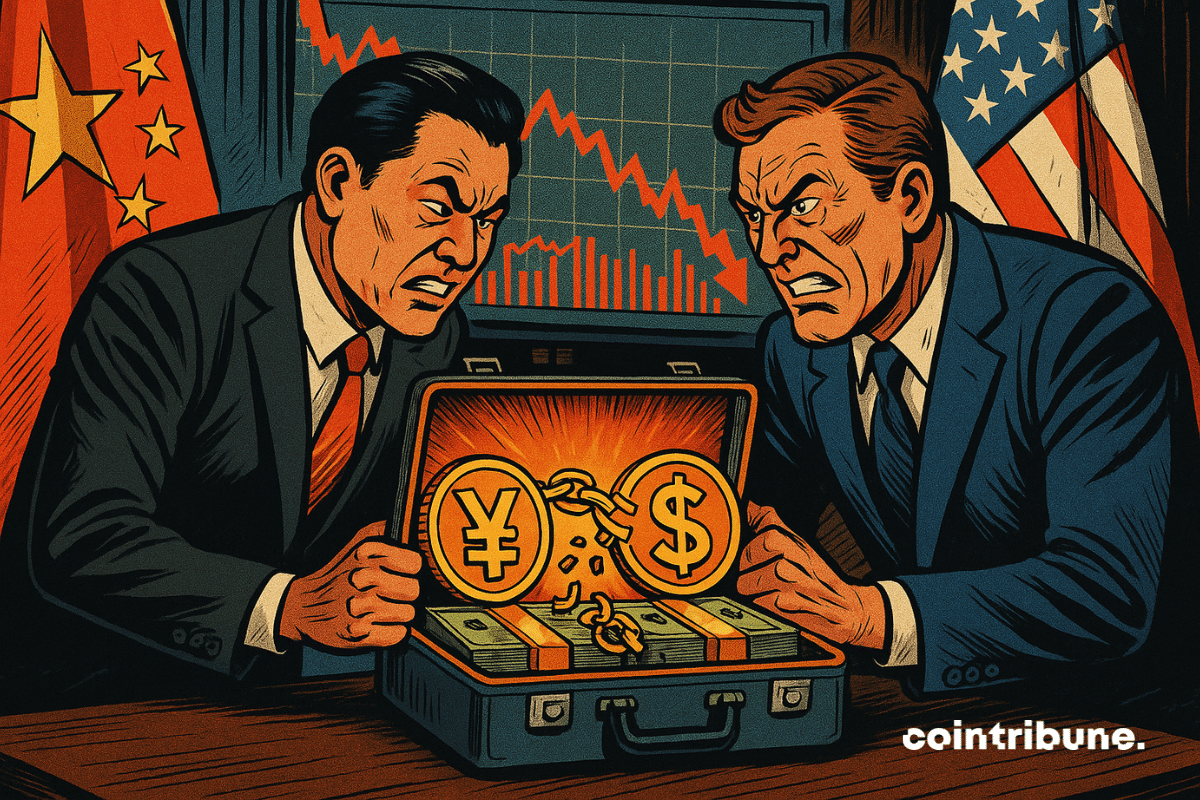In 2025, Nvidia is no longer just a capitalization machine. The company has found another acceleration, this time political. Donald Trump, against part of his own camp, chose to open a very costly door for it.
Chine
China has just made a big move: the central bank is further tightening its crackdown on crypto and stablecoins, calling them a major threat. Why this radical decision? What impacts for the global market and investors?
Banned but coveted, China plays it cool and reconnects its bitcoin machines. Silence in Beijing, but business is booming in provinces where electricity costs nothing.
A few days before Thanksgiving, Washington and Beijing are preparing to conclude a decisive agreement on rare earths, these vital materials for the technology industry, defense, and crypto mining. In a tense geopolitical climate, this compromise could defuse a crisis with heavy consequences for global supply chains. Faced with the threat of US customs sanctions and Chinese export restrictions, this agreement marks a strategic turning point, but nothing is decided yet.
As states tighten their control over cryptos, an old bitcoin theft resurfaces amid a geopolitical rivalry. LuBian, a Chinese mining pool, reportedly lost more than 127,000 BTC in 2020. Remaining discreet for years, the case suddenly resurfaces as Beijing now accuses the United States of having seized these funds, now valued at over 14 billion dollars, through an intelligence operation. The suspicion of a state confiscation reignites tensions between two superpowers.
Trump, crowned president of mental mining, dreams of a bitcoin empire while Beijing prepares its tokens... A crypto-crusade to follow between tweets, stablecoins, and the digital yuan under surveillance.
In the Sino-American escalation, a subtle lever takes on an explosive dimension: rare earths. Essential in advanced technologies, these materials become the silent weapon of a strategic duel where industrial sovereignty and monetary confrontation intertwine.
Gold enters the 24/7 era. Driven by the record rally of the yellow metal, tokens backed by gold have just exceeded 1 billion dollars in daily volume. This milestone establishes tokenized gold as a trading and hedging tool, more agile than traditional ETFs.
Ripple accelerates while the market slows down. The company is preparing a raise of about $1 billion to accumulate XRP via a SPAC backed by a digital asset treasury structure (DAT). The timing is delicate: liquidations are piling up, Bitcoin falls, and Solana loses ground. However, the strategy is clear: stabilize the supply, speak to the corporate finance world, and expand crypto token usage in payments. Let's review the stakes.
The technological battle between Beijing and Washington reaches a new level. According to the Financial Times, China has ordered its digital giants, including Alibaba and ByteDance, to immediately suspend their purchases and tests of Nvidia's latest artificial intelligence chips, the RTX Pro 6000 D. This decision illustrates the rising tensions around semiconductors, now at the heart of the geopolitical and economic rivalry between the two superpowers.
The internationalization of the Chinese currency is no longer a fantasy. The growth of international payments in yuan is skyrocketing. Bitcoin is lurking.
As the war in Ukraine enters a critical phase, Donald Trump throws a wrench in the diplomatic pond. The American president stated that no new sanctions against Moscow would be taken as long as NATO countries continue to buy Russian oil. This statement exposes the persistent fractures within the Alliance and revives the question of its strategic coherence towards Russia.
By seeking to isolate his rivals, Donald Trump could well get the opposite effect. Under the pressure of his trade sanctions, the countries of the BRICS bloc, long divided, are beginning an unprecedented strategic rapprochement. As tensions rise, China, India, Russia and their partners seem more willing than ever to cooperate economically and diplomatically.
The fragile balance between artificial intelligence and cryptocurrencies is about to be disrupted. DeepSeek, the Chinese AI gem, is about to launch a chip entirely developed and manufactured in China. This announcement, seemingly purely technological, could trigger a real earthquake in the US markets… and crypto would not come out unscathed.
The United States extends the 90-day tariff truce concluded with China. The American president signed, on August 11, a decree setting the new deadline to November 10. The existing surcharges are maintained. This measure avoids an automatic increase in customs duties and allows additional time to continue negotiations.
While the trade war intensifies, Beijing and Moscow show their determination. In July, their exchanges jumped to $19.14 billion, an annual record that contrasts with the gloom of the first half of the year. This rebound occurs as Donald Trump threatens China with new tariffs, after sanctioning India for its Russian oil purchases.
The economy is at risk of a commercial earthquake: the suspended tariffs could come into effect in August. The details here!
Rio is set to host a high-stakes BRICS summit, marked by two historic absences: Xi Jinping and Vladimir Putin. The Chinese president is withdrawing for the first time since 2013, while his Russian counterpart remains in the Kremlin, targeted by an arrest warrant from the ICC. At a time when the bloc wants to assert itself against the dollar and strengthen its influence, these withdrawals weaken the group's unity and raise doubts about its geopolitical trajectory.
Can the dollar lose its global supremacy? What was once speculation is now taking a concrete diplomatic turn. As the BRICS summit approaches in Rio, major emerging economies are placing local currency transactions at the heart of their strategy. This shift occurs within a context of growing geopolitical tensions and demands from the Global South for a more balanced financial system. Behind this dynamic lies a possible redefinition of the rules of global trade.
While Israeli strikes target sensitive Iranian sites and Tehran responds with missiles on Tel Aviv, the military escalation is redefining balances in the Middle East. However, a strategic absence intrigues: that of the BRICS. A newcomer to the bloc, Iran was counting on solid support against its sworn enemy. Yet neither Moscow, nor Beijing, nor New Delhi are committing. This silence exposes the limits of an alliance that Tehran saw as a counterweight to Western hegemony.
In the turmoil of global commercial reconfigurations, Beijing is advancing its pawns. China announces the complete removal of tariffs on exports from 53 African countries, expanding preferential access to its market. Behind this gesture lies a targeted diplomatic offensive as Washington, under the leadership of Donald Trump, reactivates protectionist levers against the continent. Africa, long peripheral in geo-economic arbitration, is becoming the epicenter of a clash of influences where industrial ambitions, strategic alliances, and narratives of sovereignty intersect.
A discreet yet massive shift is redefining the global monetary balances. Indeed, over 90 countries, led by the BRICS, are abandoning the dollar in their international exchanges. In its place, the yuan, the ruble, or the rupee are gradually taking over. This strategic realignment, far from being a mere technical adjustment, challenges the financial order built around the United States since the post-war period. A stated desire for economic sovereignty and a direct challenge to American hegemony over global flows are at the root of this movement.
As Washington and Beijing reopen a diplomatic channel in London, tensions over rare earths and semiconductors threaten the global balance. In the face of the Chinese delegation, Washington demonstrates its firmness. Donald Trump, true to his style, sets the tone: "China is not easy." Behind this statement lies a reality: neither side seems willing to yield on such strategic and explosive issues.
AI: Nvidia releases a $6,500 chip to circumvent US sanctions and maintain its presence in China. Details in this article!
We are still waiting for those happy days when it would rain dollars, to the point of no longer knowing how to spend them. However, Wall Street and local businesses seem to be struggling. The CEO of Nvidia, Jensen Huang, is sounding the alarm. The technological and trade wars initiated under Trump have not finished causing damage. While some signs of peace appear after discussions in Geneva, American companies are still suffering heavy losses. Nvidia is on the front line and is questioning the future of an economy focused on AI.
The Chinese printer manufacturer Procolored has allegedly distributed drivers infected with malware that steals Bitcoin. This information was reported this week by the press in the Asian country and indicates that 9.3 BTC were stolen. The manufacturer stated that it has removed the infected drivers, but they were made available for global download. This issue is said to have been discovered through the insistence of a YouTuber.
Addentax invests 800 million dollars in crypto to strengthen its strategic positioning. We provide you with the details in this article!
It's a paradox that would make even the most seasoned economists raise their eyebrows: while the dollar wavers, the Asian economy is rising up with an almost insolent confidence. At a time when the American Federal Reserve is hesitating on interest rates, and trade tensions seem to be easing without really dissipating, Asia is benefiting from an unexpected boost. This shows that even in the global monetary fog, some find their way.
Chinese economy: prices are sinking, the people are saving, Beijing is patching things up, dishes are changing. The dragon is coughing, but still plays the mystery card to avoid being roasted.
While the Sino-American trade war seemed frozen in an endless game of retaliation, an unexpected gesture has rekindled hope: Beijing agrees to official talks with Washington. A first in months. This meeting, much more than a simple diplomatic exchange, crystallizes the deep tensions shaking global trade and the economy of the two giants.


